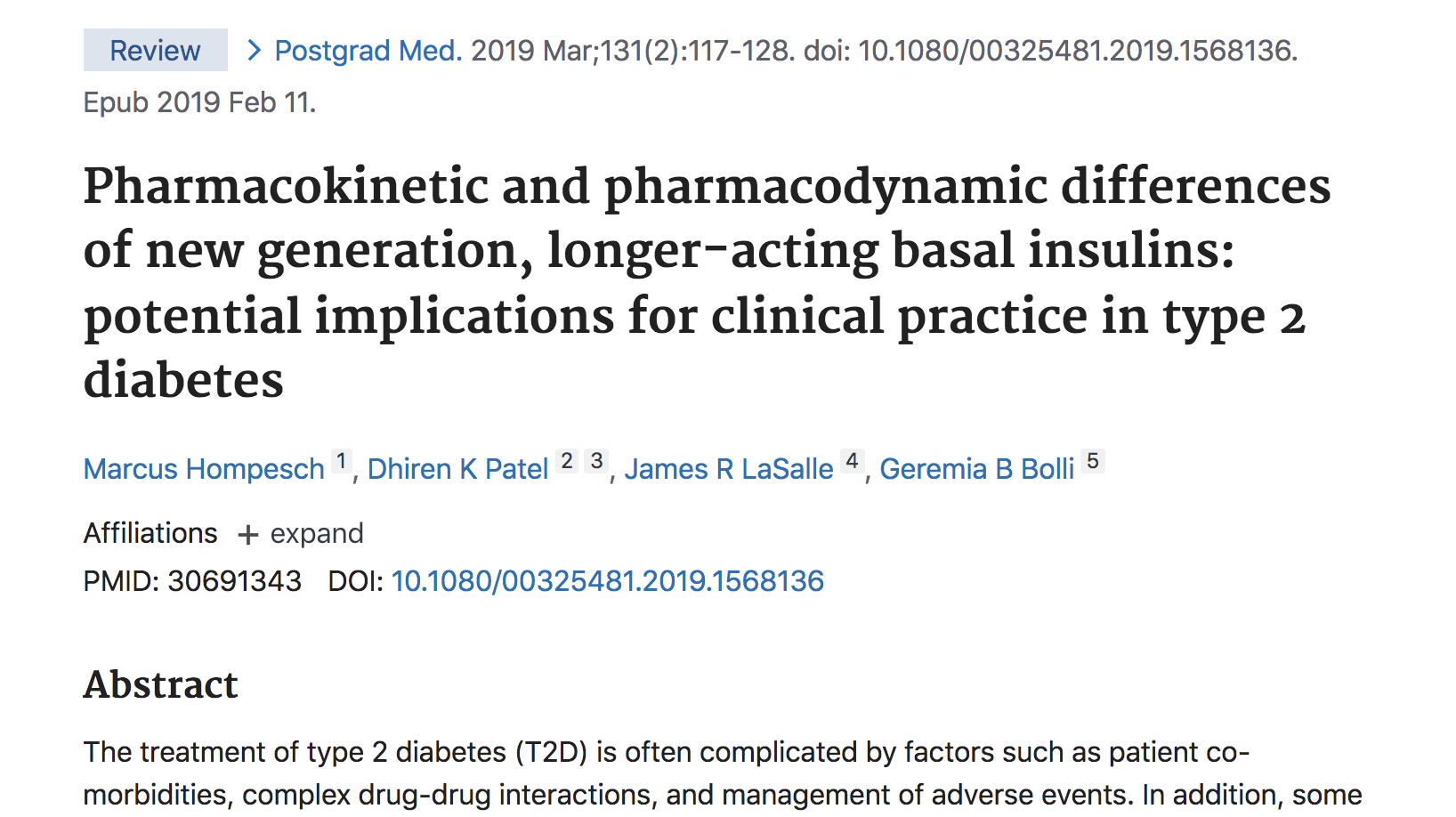About This Article
The treatment of type 2 diabetes (T2D) is often complicated by factors such as patient co-morbidities, complex drug-drug interactions, and management of adverse events. In addition, some of these factors are highly dependent on the nature of the treatment regimen and the molecular and physical properties of the drugs being used to treat patients with this disease. This calls for a better understanding of how the properties of individual drugs affect the overall outcome for patients with diabetes. Clinical pharmacology studies to assess the pharmacokinetic (PK) and pharmacodynamic (PD) characteristics of new diabetes drugs play an important role in advancing our understanding of the interactions between a drug and the human body. Specific PK and PD techniques such as the glucose clamp test can be applied to assess the properties of drugs used for the treatment of diabetes. Basal insulin analogs are a common treatment option for the maintenance of glycemic control in patients with T2D. These drugs work by mimicking endogenous insulin secretion within the body and provide stable and prolonged insulin action to achieve optimal glucose levels. Insulin glargine 300 U/mL (Gla-300) and insulin degludec (IDeg) 100 U/mL and 200 U/mL represent a new generation of longer-acting basal insulins. These drugs demonstrate improved PK and PD properties compared with previous basal insulins, allowing them to more closely mimic physiological basal insulin secretion. Here we review the methods used to evaluate the PK and PD profiles of Gla-300 and IDeg and describe studies that have investigated the PK/PD properties of these drugs in type 1 diabetes. The aim of this review is to inform primary care physicians of the value and limitations of data from clinical pharmacology studies when prescribing these agents for the management of T2D.




